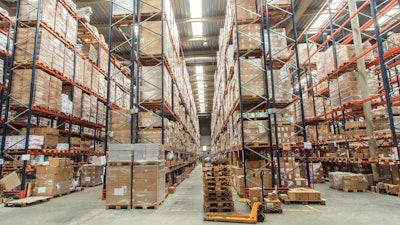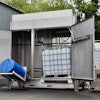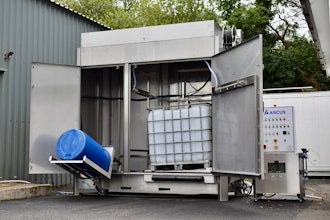
In the wake of the COVID-19 pandemic, supply chain volatility, rapidly changing consumer demands and labor shortages have unfortunately become staple challenges. Supply chain resiliency was not as much of a priority before the pandemic, and therefore was not measured or optimized. These latencies and shortages, left unmanaged, lead to a frustrating consumer experience, lagging sales and inefficient operations, all of which will negatively impact revenue generation.
Supply chain visibility solutions are helping overcome these barriers. Investing in supply chain visibility, combined with demand sensing at every node and touchpoint, grants the agility needed to ensure a streamlined product journey from manufacturer to final purchase.
Warehousing Visibility
From distribution centers to industrial factories, leaders need a line of sight into their warehouse operations to ensure a safe and efficient environment for all associates. Leveraging data-driven warehouse management systems (WMS), warehouse managers can gain real-time visibility into employee and material handling equipment (MHE) performance, allowing them to intervene in the case of repeat incidents that could potentially contribute to an unsafe or unproductive environment. The feedback provided by these solutions can even inform onsite training to ensure continual improvement.
In addition, radio frequency identification (RFID) solutions deliver greater location accuracy within the warehouse, empowering managers to understand and predict where every pallet or SKU is heading. For instance, consider a warehouse with ambitious speed KPIs - the facility’s WMS reports that loading times have increased at a certain warehouse dock over the past few days, slowing down deliveries in the process. Based on the information provided by RFID, managers can identify exactly where the bottleneck is occurring, adjust training or processes accordingly and quickly get loading speed back on track.
Transportation Resiliency
The Evergreen ship that became lodged in the Suez Canal in March 2021 was a stark reminder of how vulnerable the supply chain industry is to volatility at the transportation level. Whether products are transported by sea, air, or land, expectations for rapid delivery are higher than ever.
Advanced prescriptive technologies, like prescriptive analytics, provide the tools to anticipate transportation issues before they happen. By constantly gathering and analyzing data on weather, traffic patterns and potentially disruptive events, prescriptive solutions can anticipate transportation challenges and provide supply chain professionals with the necessary actions to avoid them and arrive at the destination on time. For further accuracy, advanced fleet services solutions can also provide real-time information on driver performance, ensuring they are making the safest and most efficient decisions while on the road.
Ensuring Customer Satisfaction
Supply chain challenges don’t end when the product reaches the final destination. An empty shelf can be frustrating to customers, potentially to the point that they seek a product elsewhere, and ultimately switch their loyalty. To guarantee the right products are on the right shelves, right when customers need them, maintaining inventory visibility is critical.
Advanced analytics solutions routinely monitor inventory data to identify anomalies that can potentially lead to an out-of-stock product. For example, consider a big-box store that has unexpectedly run out of a popular brand of smartphone.
Advanced analytics can cross-reference sales records with product inventory to discover a discrepancy, prompting store managers to check CCTV footage and discover an increased instance in employee shoplifting; alternatively, the solution could identify a clerical error made when ordering products from the manufacturer, point to substitutions or even expedite new inventories to replenish the shelf and maintain the loyalty of its customers. In either case, the solution will automatically alert a manager to the issue and share prescriptive actions to quickly and seamlessly resolve the situation.
In an industry in which consumer expectations have never been higher, there is a greater need to invest in supply chains to stay one step ahead of the competition. Technology-powered visibility is the key to a flexible supply chain, streamlined product journey, satisfying customer experience and consistent sales growth. For organizations ready to take the plunge, data-driven solutions grant real-time insight in fostering long-term success.
Guy Yehiav is the general manager of Zebra Analytics.






















